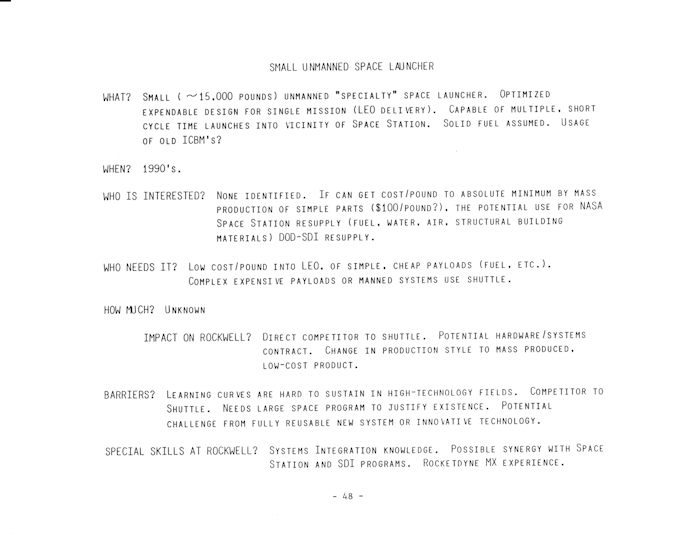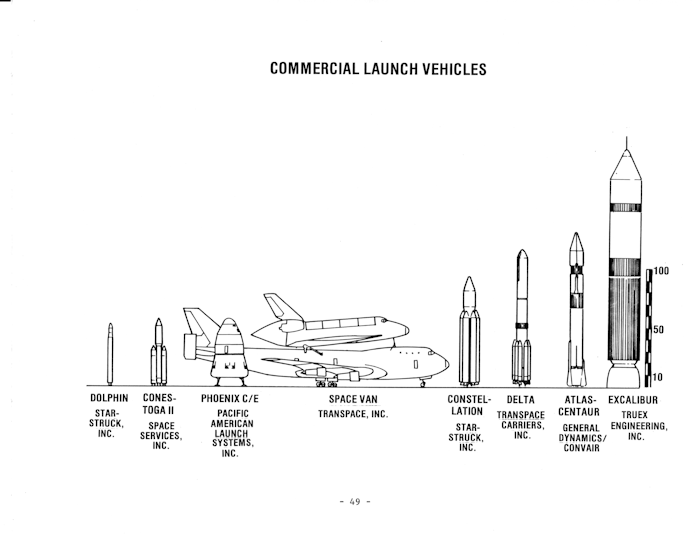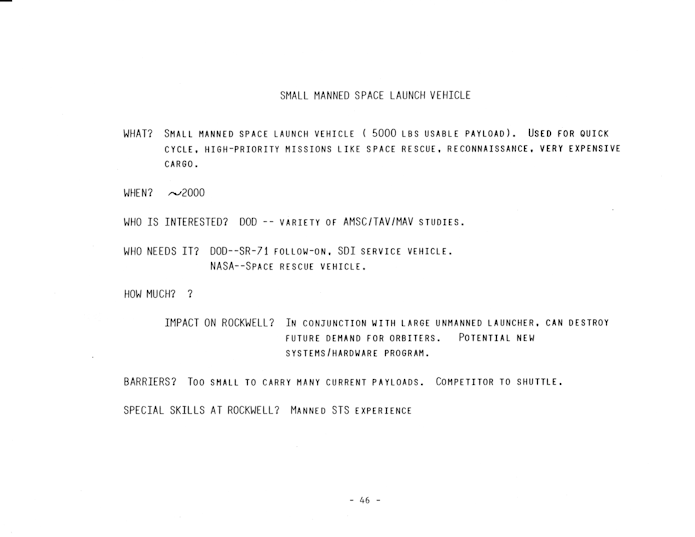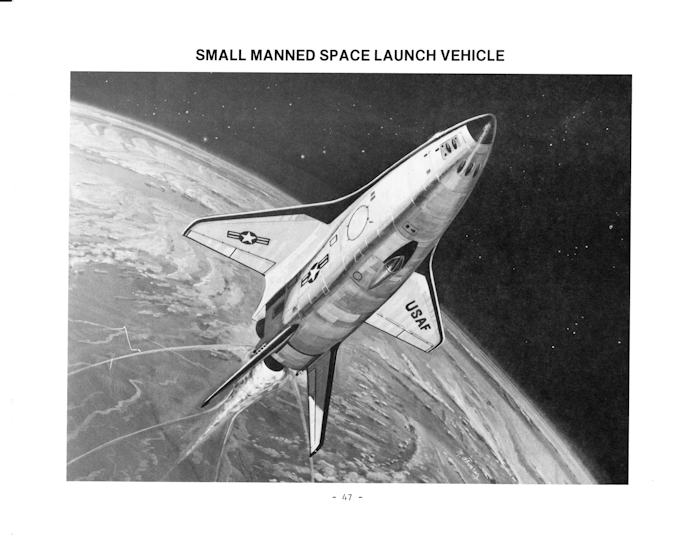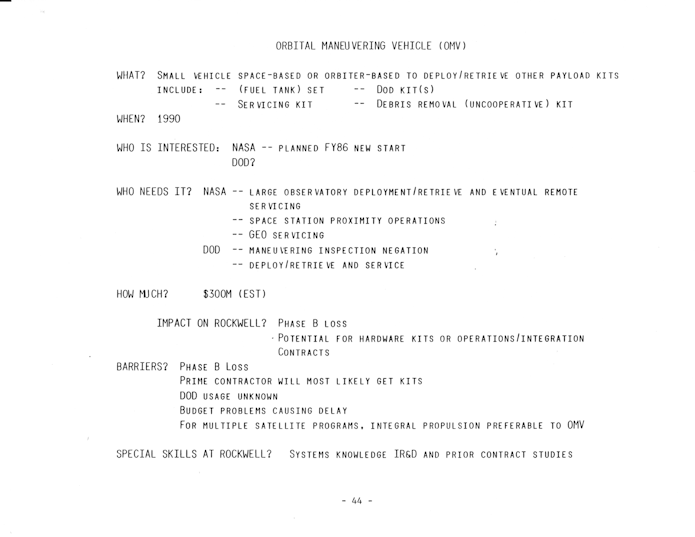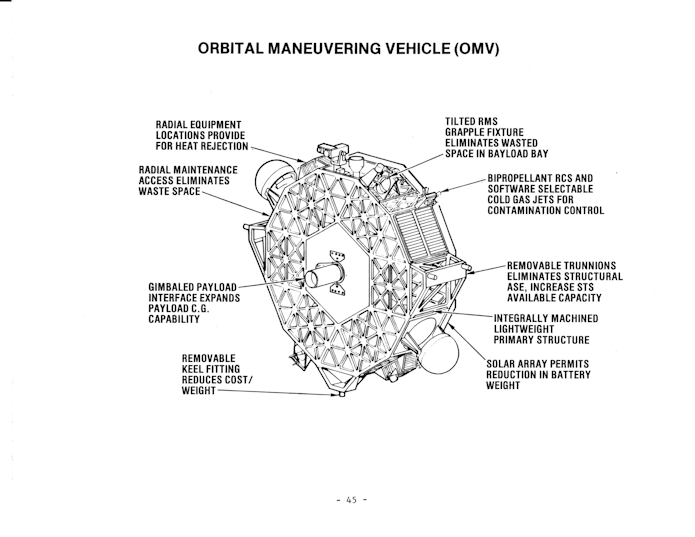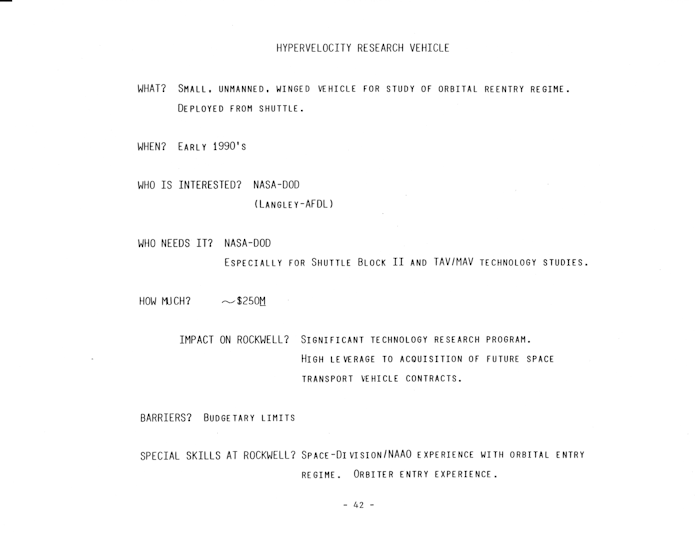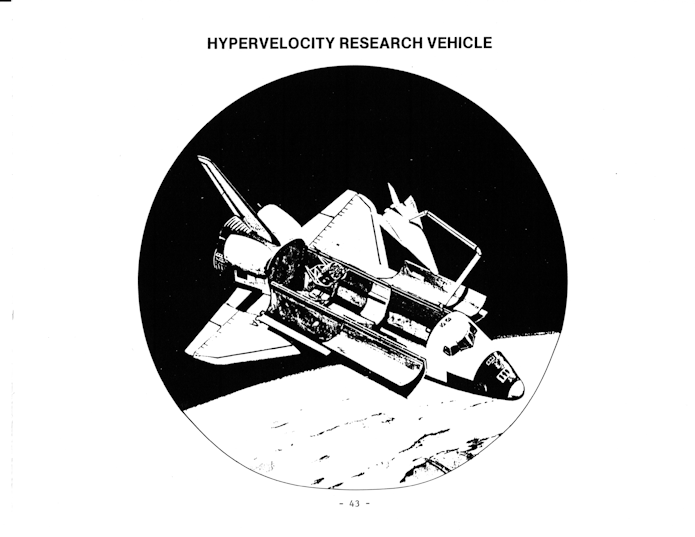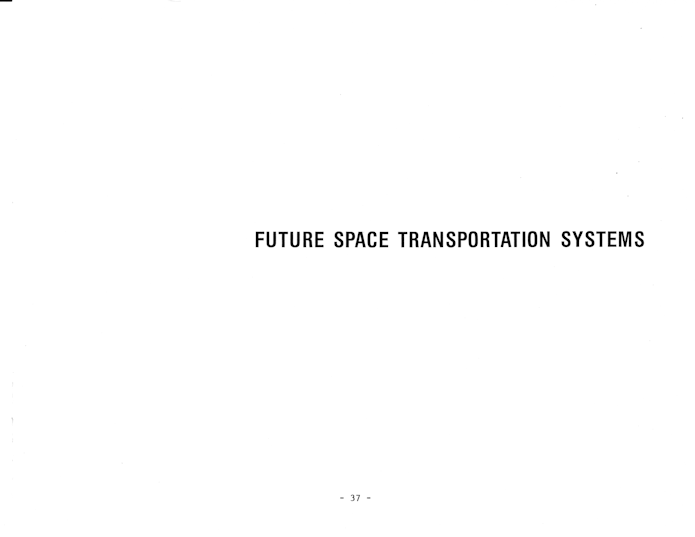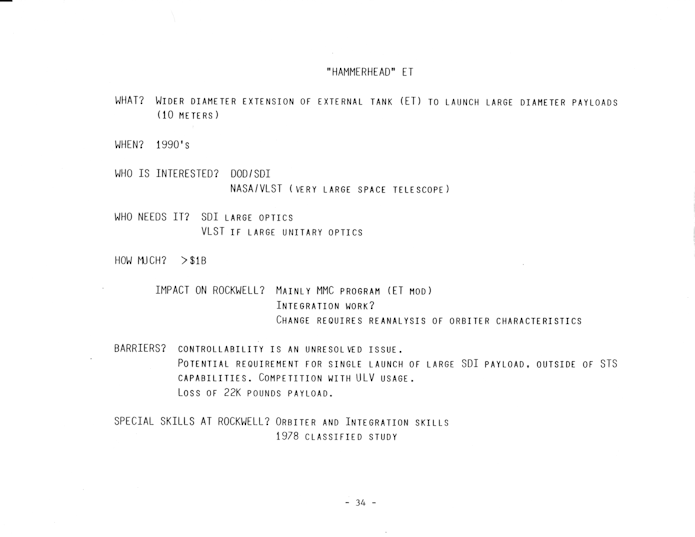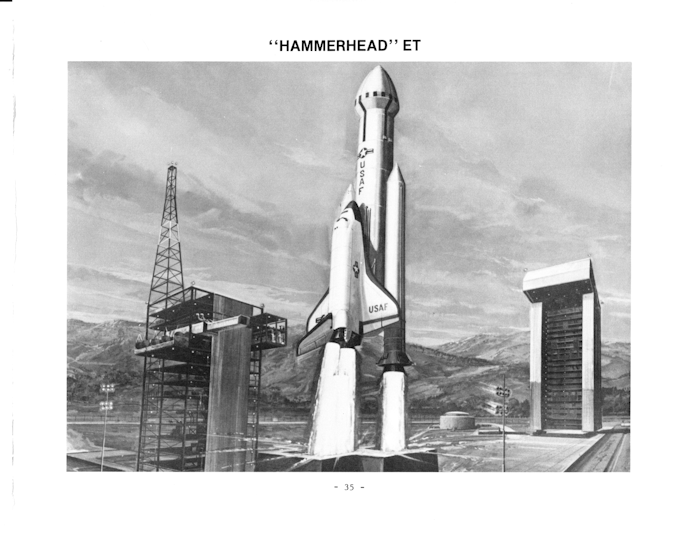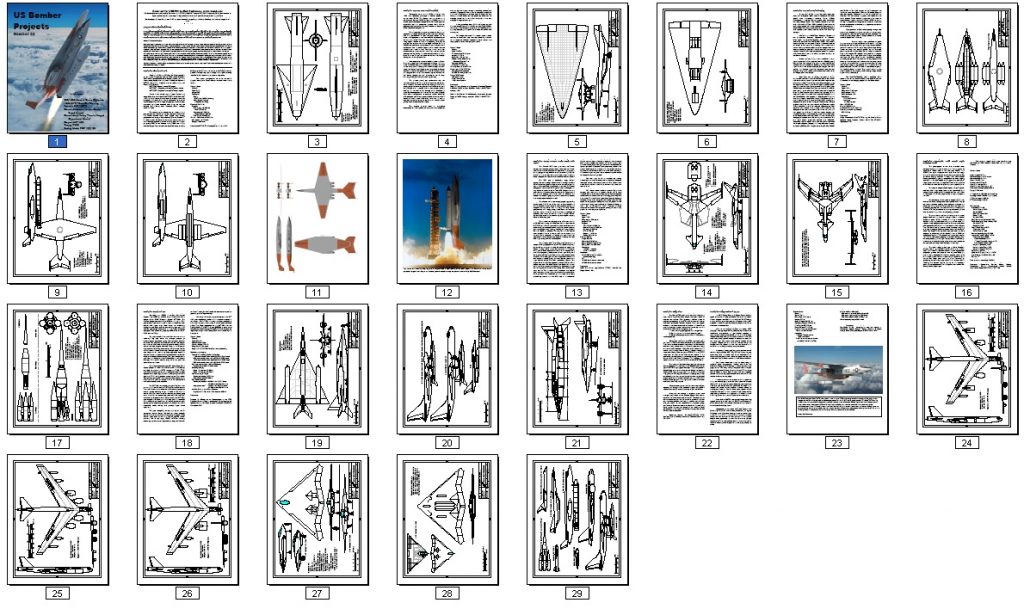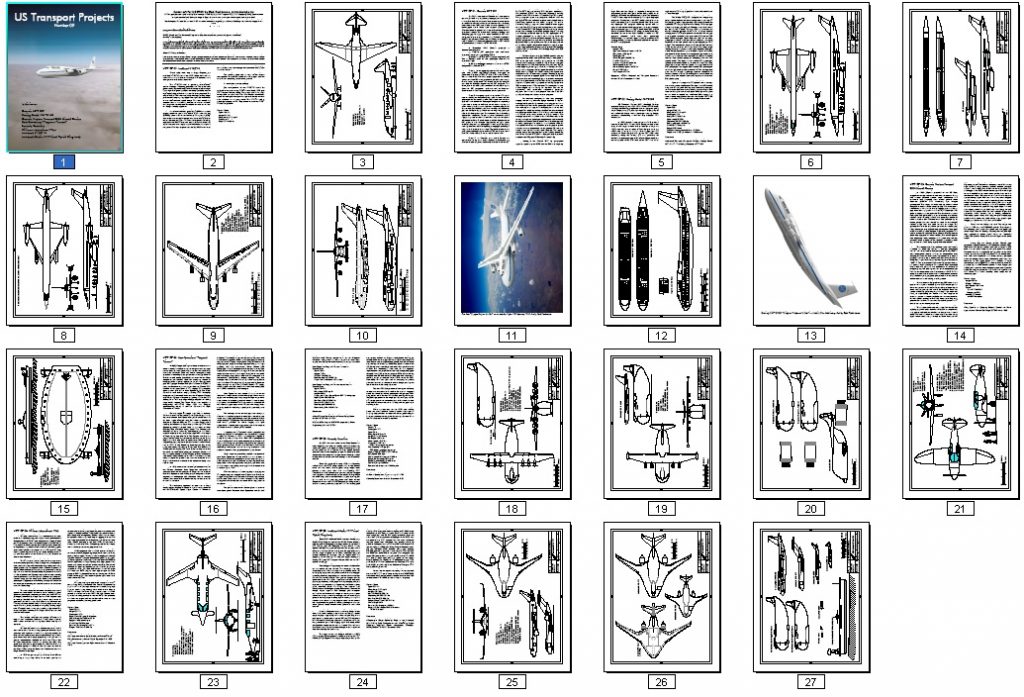Continuing…
Rockwell in 1985 considered the business case of small unmanned launchers of 15,000 pounds payload capability. The goal would be low cost ($100/lb of payload delivered to orbit). It’s not clear, at least from this report, if Rockwell had a design of their own under consideration; the illustration included shows only non-Rockwell commercial designs… the “Dolphin” and “Conestoga II” from Space Services, Inc; the “Phoenix” SSTO from Pacific American Launch Systems; the “Space Van” from Transpace Inc. (though what’s shown is just the standard orbiter atop the 747 SCA); the “Constellation” from Star Struck Inc.; the Delta from Transpace Carriers Inc (which appears to be a standard Delta II); the Atlas from Convair; and the “Excalibur” from Truax Engineering, a reduced-scale version of the Aerojet Sea Dragon of two decades earlier.
